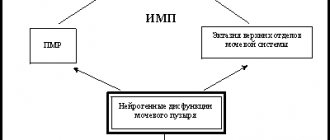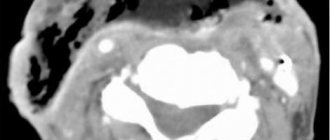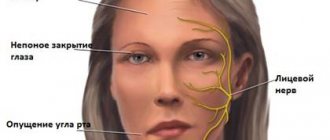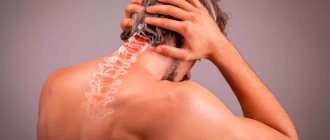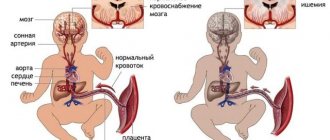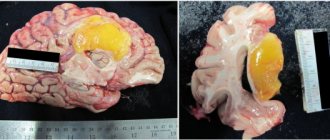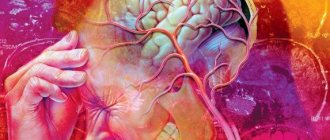Overactive bladder (OAB) is a widespread problem affecting hundreds of millions of people worldwide.
The total cost of treating such patients amounts to tens of billions of dollars in America alone. Thirty percent of all men and 40 percent of all women in the United States live with symptoms of OAB.
But the number of people suffering and not seeking medical help is likely much higher. Firstly, patients are embarrassed. They don't know how to talk to their doctor about their symptoms. Others don't go to doctors because they think there is no cure for the problem.
If you suspect that you have a health problem, you should under no circumstances wait for improvements, but urgently need to consult with urologists. OAB significantly worsens the quality of life of patients. You need to know that there is a treatment for these disorders and not let the symptoms of OAB ruin your life.
What is overactive bladder and how does it manifest?
Overactive bladder is not a disease. This is a collective concept (syndrome), which includes a complex of urinary symptoms.
The main symptom is a sudden strong urge (imperative or commanding urge) to urinate that you cannot control. At the same time, patients note that in most cases they are unable to run to the toilet and may leak urine (incontinence)
If you live with this problem you very often experience:
- Urine leakage (incontinence): Very often, people with an overactive bladder experience urge incontinence, which is the inability to hold urine after a strong urge to urinate. It is necessary to distinguish this condition from stress urinary incontinence. Women with stress urinary incontinence experience urine leakage when sneezing, laughing, or physical activity.
- Frequent urination: On average, you have to run to the toilet more than eight times a day.
- Nighttime urination (nocturia): Having this symptom more than once is another characteristic sign of an overactive bladder.
Urinary dysfunction
The bladder is a unique organ of its kind, which is characterized, on the one hand, by a constant change in volume while maintaining low pressure in its cavity, and on the other hand, by the ability to coordinate, contraction sufficiently strong, necessary for the expulsion of urine, and has a rather complex system nervous regulation with central, spinal and peripheral representation.
Urination is a complex reflex act. Normal urination is determined by the anatomical and functional usefulness of not only the sphincters and detrusor, but also the system of nervous structures that regulate this complex act. The abdominal and perineal muscles also take part in urination.
From birth to 6 months, the child has an “immature type of urination.” The reflex arcs of the bladder close at the level of the spinal and midcord, and urination occurs reflexively as urine accumulates (up to 20 times a day), i.e. like an unconditioned reflex. From 6 months, the child begins to feel the filling of the bladder and tries to “signal” to others about the need to empty it (the child becomes concentrated, begins to push, sometimes cry, and calms down after urinating). After 1 year, the conditioned reflex is actively formed.
Most children, by the age of 4 or earlier, have developed a fully formed mechanism for controlling the act of urination, similar to an adult. This mechanism is characterized by the absence of involuntary contractions of the detrusor during the storage phase of the bladder.
After 3-4 years, regular urinary incontinence is considered pathological and the child requires examination and treatment.
The problem of urinary disorders is one of the leading ones in pediatric urology, because... this significantly reduces the quality of life of patients due to existing urinary incontinence, pollakiuria (frequent urination), urgency or, conversely, the inability to empty the bladder independently, but is also associated with complications such as urinary tract infection, various variants of disturbances in the urodynamics of the upper urinary tract (VUR, ureterohydronephrosis) and chronic kidney disease.
The main causes of urinary incontinence in children can be:
1.
Inflammatory diseases of the urinary system (cystitis, urethritis). Cystitis is inflammation of the mucous membrane of the bladder. Can be acute or chronic. Due to swelling and inflammation of the mucous and submucosal layer of the bladder neck, the innervation of the bladder is disrupted, insufficiency of the closure apparatus of the bladder neck appears and, as a result, periodic urinary incontinence occurs. Characteristic symptoms of acute cystitis are: frequent (pollakiuria) and painful urination (dysuria), leukocyturia. Acute cystitis can be combined with urethritis, and there is pain when urinating in the projection of the urethra.
2.
Malformations of the urinary tract requiring surgical treatment:
- bladder exstrophy
- epispadias
- ectopic ureteral orifice
- posterior urethral valve
3.
Various types of mental disorders and inappropriate behavior in children (disinhibited, hyperactive children, etc.) with episodes of incontinence or incontinence of urine (and possibly feces). These children need consultation with a child psychologist, psychiatrist, EEG, special tests and other diagnostic measures indicated by these specialists.
4.
Malformations and injuries of the nervous system at its various levels (myelodysplasia of the lumbosacral spinal cord, brain injuries, cervical and lumbar spinal cord) are the cause of the development of neurogenic bladder dysfunction.
Neurogenic dysfunction of the bladder should be understood as various forms of violations of its reservoir and evacuation functions.
There are:
- Normoreflexive
- Hyperreflexive
The most common cause of nighttime urinary incontinence and daytime (urge) urinary incontinence is a hyperreflex (overactive) bladder. In this case, the child urinates frequently, in small portions, with shortened intervals between micturitions; There may be an imperative (urgent) urge to urinate, up to imperative urinary incontinence, enuresis (involuntary urination during sleep (from 1 to 5 times).
The hyporeflex bladder is accompanied by the symptom of rare urination (no more than 3-4 times a day), the portions during urination are 2-3 times higher than the age norm. This group of patients has a reduced feeling of urge to urinate, most often they “play around”, accumulate large volumes of urine and miss it due to neurogenic weakness of the bladder sphincter.
A reflex bladder occurs in children with severe neurological symptoms (spinal hernia of the sacrococcygeal region).
These children may experience constant drip urinary incontinence of the paradoxical ischuria type. In such patients with damage to the caudal parts of the spinal cord, as a rule, there is a combination of anal sphincter insufficiency and fecal incontinence (encopresis).
The preclinical examination program is in accordance with the recommendations of the International Childhood Continence Society (ICCS) and includes, along with a general clinical examination, microscopic and cultural examination of urine, ultrasound examination of the upper (detection of signs of obstructive uropathy) and lower urinary tract, including determination of residual urine. If you suspect the presence of latent forms of myelodysplasia, perform radiography of the lumbosacral spine/MRI or (in children of the first years of life) neuroimaging of the corresponding part of the spinal cord and spinal canal. If there are signs of obstructive uropathy, it is necessary to conduct an X-ray urological examination, including cystography and excretory urography.
Assessment of the urodynamics of the lower urinary tract begins with filling out a urination diary for 72 hours, which records the time and volume of urine excreted and lost, determines the frequency of episodes of urinary incontinence and the duration of “dry” intervals, the presence of urgency, as well as registration of bowel movements indicating the presence of constipation and/or clotting.
Hardware urodynamic research includes both non-invasive methods (triple uroflowmetry with determination of residual urine) and invasive methods - determination of maximum cystometric capacity, registration of involuntary detrusor contractions, their amplitude; cystometry is also performed with a pharmacological test (M-anticholinergic - 0.1% atropine solution). To assess the closure apparatus, profilometry of the urethra with a cough test is performed.
Therapy for various types of neurogenic bladder dysfunction is also different.
In case of a hyporeflex bladder, the child is transferred to forced urination in combination with physiotherapeutic treatment methods, and with a large volume of residual urine, periodic catheterization is added to this therapy, which can completely eliminate independent urination.
The main methods of treating a hyperreflex bladder are methods of reducing intravesical pressure, increasing the reservoir function of the bladder, which can be achieved with the help of physiotherapy, pharmacotherapy with drugs that have an anticholinergic effect, improving hemodynamics in the detrusor wall, membrane stabilizers, peripheral vasodilators.
Patients with an areflex bladder should be transferred to periodic catheterization at the first stage of treatment, and in the presence of detrusor overactivity, m-anticholinergics should be added to therapy. In patients who have problems performing catheterization through the urethra, they resort to surgery - appedicostomy (Mitrofanoff-type surgery), which can be performed laparoscopically.
Despite certain successes of these types of treatment, parents and children themselves are not always satisfied with the results of such treatment, both due to insufficient clinical effectiveness and due to the side effects of drug treatment with M-anticholinergics. In rare cases, in the most complex children with complete loss of reservoir function, the method of bladder augmentation is used to create a reservoir with low intraluminal pressure. The introduction of chemical denervation methods into clinical practice makes it possible at a certain stage to delay or even avoid surgical treatment methods.
In recent years, for the treatment of neurogenic bladder dysfunctions accompanied by intravesical hypertension and small bladder volume, endoscopic injections into the detrusor of botulinum toxin type A have been used, the mechanism of action of which is the presynaptic blockade of M-cholinergic receptors, which leads to relaxation of the smooth muscle fibers of the detrusor. The effect of this therapy reaches 6-12 months.
Causes of overactive bladder and who is at risk?
In healthy people, if the bladder is not full, it is in a relaxed state. When nerve signals from the brain indicate that the bladder is full, the urge to urinate occurs. The bladder muscles then contract and expel urine through the urethra (urethra). The urethra has muscles called the sphincter. Due to them, the urethra opens and closes and thus urine does not flow out without our willingness to go to the toilet.
Patients with overactive bladder receive false nerve signals from the brain to the bladder, even when the bladder is not full.
One reason is increased activity of the bladder muscles.
Risk: As you get older, your risk of developing OAB symptoms also increases, regardless of gender. Women who have gone through menopause and men who have had prostate problems are at risk of developing an overactive bladder. In addition, people with neurological diseases such as stroke and multiple sclerosis are also at high risk of developing OAB.
Bladder-irritating foods and drinks (caffeine, alcohol, spicy, hot, sour) contribute to increased symptoms in some patients.
Diagnostics: how it goes, what procedures are performed
Diagnosis of overactive bladder syndrome begins with informing the doctor about the patient’s complaints and medical history. One of the key elements of diagnosis is the analysis of the number of urinations during the day and at night. Monitoring is carried out using the patient's diary, in which it is necessary to enter data on urination for three days.
A diagnosis of pathology in the bladder is made if the patient urinates more than 8 times a day, with uncontrollable urges occurring at least twice a day. The doctor also prescribes laboratory tests, which include the following studies to determine the causes of the pathological condition:
- bacteriological tests to detect the presence of infection in the genitourinary system;
- cystoscopy and urethroscopy;
- Ultrasound, which examines the kidneys, bladder, and prostate gland.
Through these procedures, during an outpatient examination, the doctor identifies various pathologies of the genitourinary system that arise along with the symptoms that characterize an overactive bladder. In order to fully confirm the diagnosis and prescribe appropriate treatment, a urodynamic analysis with fullness cystometry is performed. That is, the Doctor records an increase in detrusor pressure during urgency when the bladder is full.
It is also necessary to inform the specialist about the medications you are taking, since some of them may worsen the symptoms of incontinence.
It is necessary to come for diagnostics with a slightly full bladder, since this way a more detailed ultrasound examination can be carried out, on the basis of which effective treatment will be prescribed. It is also recommended that you first fill out a urination diary for three days, which will allow the doctor to get a complete picture of the patient’s medical history. The following data must be entered into the diary: volume of urine, muscle tension during urination, degree of leakage and intolerance of urge, volume of fluid drunk.
How to diagnose an overactive bladder?
To begin with, the doctor needs information about your past and current health problems, what symptoms you have had and how long they have bothered you, what medications you take, and how much fluid you drink during the day.
Urologists perform examinations aimed at finding out the causes of your complaints, and also assess the condition of the pelvic organs and rectum in women and the prostate and rectum in men.
It is necessary to conduct ultrasound diagnostics of the pelvic organs in order to exclude concomitant diseases of the bladder and determine residual urine.
Laboratory tests of urine are performed to rule out inflammation and infection of the bladder.
It is recommended to keep a voiding diary to learn more about your symptoms.
Complications and consequences
Most congenital diseases of the nervous system in children affect the quality of urination, but neurological symptoms often come first. Complications of impaired urination occur faster than in adults.
- Mental disorders (anxiety, depression, sleep disturbances) that reduce the level of quality of life.
- With inadequate treatment, the disease can lead to serious consequences for the patient’s health - the development of chronic cystitis (inflammation of the bladder), vesicoureteral reflux (reflux of urine from the bladder back into the ureters and kidneys, followed by their atrophy and the development of chronic renal failure), pyelonephritis ( microbial inflammatory kidney damage), etc.
Treatment methods
There are several options to help you manage your bladder. These include:
Behavioral therapy: Often the first meaningful steps towards treatment. The patient can and should make some changes to his lifestyle and diet (avoiding caffeine, alcohol and spicy foods).
Quitting smoking and losing excess weight can also improve the patient's condition. Your healthcare provider may ask you to keep a daily voiding diary to track your trips to the toilet. Behavioral changes may include going to the bathroom on a schedule throughout the day and doing "quick motion" Kegel exercises to relax the bladder and pelvic floor muscles. Unfortunately, most patients will not be able to get rid of their symptoms completely with lifestyle changes. But many of them note a reduction in symptoms with this type of treatment.
Medication: There are several medications available to relax the bladder muscles. Patients are prescribed medications in tablet form. Some drugs are used in the form of skin gels or patches.
Neuromodulation therapy: Professionals use this harmless treatment method only for a subset of patients in whom drug and behavioral therapies do not work or when patients have serious side effects from medications.
Botox injections: Some experts believe that botulinum toxin injections, better known as Botox®, can help patients who do not respond to other treatments.
Indications for the disease
To prevent and effectively treat overactive bladder, you must follow certain recommendations:
- give up strong coffee and tea, carbonated water, since these drinks irritate the organs of the genitourinary system;
- If you have frequent urges at night, it is recommended to stop drinking liquids 3 hours before bedtime. However, the daily fluid intake must be met;
- if the patient has an overactive bladder, it is necessary to completely empty the organ when urinating to the maximum, which will reduce the urge to further frequent visits to the toilet;
- for incontinence, it is recommended to use pads or diapers for adults, which will allow you to maintain personal hygiene and save people from inhaling an unpleasant odor;
- Doing Kegel exercises will help relax your pelvic floor muscles and make your overactive bladder less of a problem. It is necessary to perform gymnastics several times a day to achieve significant effectiveness of treatment.
An important aspect that allows you to effectively treat an overactive bladder is maintaining normal body weight and following a diet, adhering to the principles of a healthy diet. As practice shows, with a weight loss of 5-10%, the manifestations of diseases of the genitourinary system are significantly reduced, since significantly less pressure is placed on the bladder.
OAB in children
The problem of OAB is not related to the age category, and children quite often outgrow this condition upon reaching seven years of age. If we are talking about incontinence or excessively frequent urinary processes in a child under three years old, this phenomenon should be treated as completely normal and not a problem.
Let's consider what factors can provoke an overactive bladder in children:
- Development of infectious processes in the urinary tract.
- Presence of neurological diseases.
- Development of acute or chronic constipation.
- The occurrence of stressful situations, especially if they are associated with the urination process.
- Inability to go to the toilet for a long time.
- Overactive bladder syndrome occurs when the capacity of the organ is not large enough.
- Presence of foods containing caffeine in the diet. This applies to chocolate, sweet carbonated waters and tea.
- Structural changes affecting the organs of the urinary system.
An allergic reaction to certain foods and irritation of the organ lining can have a negative impact. According to foreign statistics, after a child turns five years old, cases of OAB in this age category decrease, this figure reaches about 15%. As children grow older, they acquire the ability to respond in a timely manner to signals sent by the body indicating the need to go to the toilet.
Main causes of the disease
There are two main types of GMF:
- With increased detrusor tone (with neurological pathology);
- Ideopathic detrusor instability (various causes).
However, there is no doubt that other health problems or medications you are taking can also cause symptoms of hyperactivity. To find out the exact cause of the disease, you should make an appointment with a specialist who, with the help of examinations and tests, can prescribe appropriate treatment.
In a normal bladder condition, a person should urinate no more than eight times. In this case, the daily amount of fluid released is about two liters. But in the case of the development of various pathologies, these parameters can change. In the case of an overactive organ, trips to the toilet become more frequent, but the volume of discharge does not change. But the size of each portion becomes different. As a rule, the impetus for the development of OAB is given by increased conductivity of impulses in those muscles that are located around it. As a result, even slight irritation of the organ’s receptors provokes muscle contraction and the desire to empty the bladder. This condition occurs as a result of neurogenic or non-neurogenic factors. The first include:
- Pathologies of the brain of the head or back, the list includes multiple sclerosis, Alzheimer's and Parkinson's diseases, various neoplasms and encephalitis. The cause of an overactive bladder can be alcoholic, diabetic neuropathy.
- Injuries and damage to the spinal cord and brain - these can be compression ruptures, results of surgery and stroke.
- Birth defects affecting the spinal cord.
- Congenital pathologies of the bladder.
Non-neurogenic factors include age, diseases developing in the genitourinary area, anatomical features and sensory disorders, in which changes in hormonal levels and the sensitivity of bladder receptors are observed against the background of atrophy of the mucous layer. Those who suffer from depression, fibromyalgia, irritable bowel syndrome and attention disorders are often prone to developing an overactive organ. The development of the pathological condition is accompanied by a number of unpleasant phenomena; the symptoms of OAB and treatment are closely related:
- Sleep may become worse.
- Quite often, infectious processes begin to develop in the urinary tract.
- Pollakiuria – increased frequency of urination – may be observed.
- Nocturia, in which urination occurs at night.
- The urge to urinate becomes urgent, in other words, urgent. This urge can last for several seconds or minutes.
- Optional but possible symptoms include urge urinary incontinence.
Important. The main problem is that these symptoms can occur in a patient regardless of the time of day or place. Accordingly, there is a noticeable deterioration in his quality of life.
